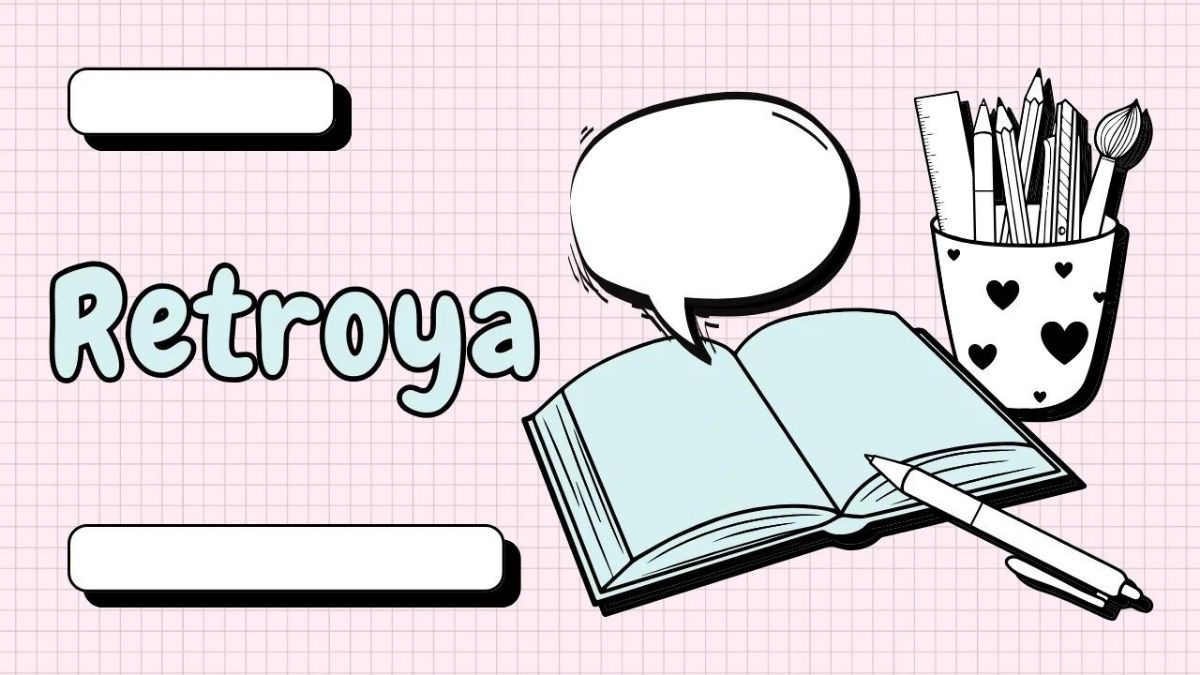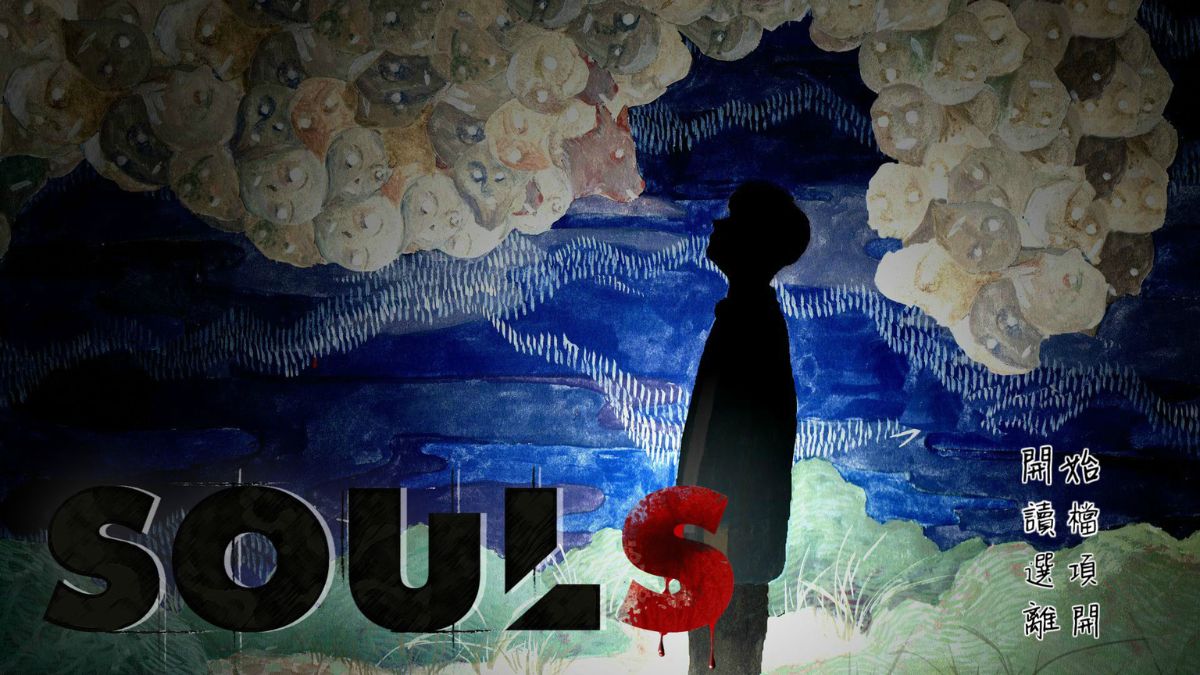Blog
The Timeless Allure of Retroya

Retro trends have an undeniable charm that transcends generations, captivating fashion enthusiasts, home decor lovers, and tech geeks alike. Whether it’s the resurgence of bell-bottom jeans, vintage vinyl records, or retro gaming consoles, there’s something universally appealing about revisiting the styles and technologies of the past. This blog post will explore the multifaceted allure of “Retroya,” a term that encapsulates the timeless fascination with retro trends. We’ll define what retro means, examine its historical context, and look at how it manifests in fashion, interior design, and technology. By the end, you’ll understand why retro is not just a fleeting trend but a lasting influence on modern culture.
Defining Retro Style
What is Retro?
Retro, short for retrospective, refers to styles, trends, and cultural elements from the past that have gained renewed popularity in the present. Unlike antiques or historical artifacts, which retain their original form and function, retro items are often reimagined or updated to fit contemporary tastes. The essence of retro lies in its ability to evoke nostalgia while remaining relevant in today’s world.
Retro trends typically draw from specific decades, such as the 1950s, 60s, 70s, and 80s, each characterized by distinct aesthetics and cultural milestones. For example, the 1950s are often associated with rock ‘n’ roll, poodle skirts, and diners, while the 1970s bring to mind disco, bell-bottoms, and lava lamps. Understanding these nuances is crucial to appreciating the full scope of retroya.
Historical Context of Retro Trends
The concept of retro is deeply rooted in cultural history. During periods of rapid change or uncertainty, society often looks back to simpler times for comfort and inspiration. This cyclical pattern can be seen throughout history, from the Victorian revival of Gothic architecture to the 1960s fascination with Art Nouveau. These periods of revival often reflect a collective desire to reconnect with the past while navigating the complexities of the present.
In the 20th century, retro trends gained significant momentum during the post-war era. The economic boom of the 1950s led to increased consumerism and a newfound appreciation for style and aesthetics. This period saw the birth of iconic fashion, furniture, and technological innovations that continue to influence retro trends today.
Key Characteristics of Retro Aesthetics
Retro aesthetics are defined by a few key characteristics that set them apart from other styles. First and foremost is the use of bold, vibrant colors and patterns. From the psychedelic prints of the 60s to the neon hues of the 80s, retro styles are anything but subdued. These colors and patterns often serve as a visual shorthand for the era they represent, instantly evoking a sense of time and place.
Another hallmark of retro aesthetics is the emphasis on form and function. Retro designs often prioritize simplicity and functionality, with clean lines and geometric shapes that offer both practicality and visual appeal. This balance of form and function is evident in everything from mid-century modern furniture to minimalist tech gadgets.
Lastly, retro aesthetics often incorporate a sense of playfulness and whimsy. Whether it’s the kitschy charm of 50s diner decor or the campy allure of 70s disco fashion, retro styles don’t take themselves too seriously. This lighthearted approach makes retro trends accessible and enjoyable for people of all ages, adding to their enduring appeal.
Retro in Fashion
Popular Retro Fashion Eras
Fashion is one of the most visible and influential arenas where retro trends make their mark. Each decade brings its own unique styles that continue to inspire contemporary fashion. The 1950s, for example, are synonymous with rockabilly dresses, leather jackets, and saddle shoes. This era emphasized tailored silhouettes and a polished, put-together look.
The 1960s brought a wave of counterculture movements that were reflected in fashion. Mod styles featuring mini skirts, go-go boots, and bold patterns became the norm. The 70s took a more relaxed approach with bohemian and disco influences, introducing bell-bottoms, platform shoes, and flowing maxi dresses.
The 1980s were characterized by excess and flamboyance, with power suits, neon colors, and oversized silhouettes dominating the scene. Each of these eras has left an indelible mark on fashion, offering a rich tapestry of styles to draw from in the world of retroya.
Iconic Retro Fashion Pieces
Certain fashion items have become iconic symbols of their respective eras, embodying the essence of retro style. The little black dress, popularized by Audrey Hepburn in the 1960s, remains a timeless staple in women’s wardrobes. Similarly, the leather biker jacket, introduced in the 1950s, has become a symbol of rebellion and cool that transcends generations.
Bell-bottom jeans, popularized in the 1970s, have made multiple comebacks over the years, proving their enduring appeal. The same can be said for platform shoes, which have been reinterpreted by designers across different decades. These iconic pieces serve as touchstones for retro fashion, offering endless possibilities for modern reinterpretation.
Modern Interpretations of Retro Style
Today’s fashion designers frequently draw inspiration from retro styles, creating modern interpretations that blend the old with the new. This fusion of past and present is evident in the resurgence of vintage-inspired clothing lines and retro-themed fashion collections. Brands like Reformation and ModCloth specialize in modern takes on classic styles, offering everything from pin-up dresses to 70s-inspired jumpsuits.
High-end designers also incorporate retro elements into their collections, bringing a touch of nostalgia to the runway. Gucci’s recent collections, for example, have featured bold patterns and silhouettes reminiscent of the 70s, while Prada has revisited the minimalist aesthetics of the 90s. These modern interpretations keep retro styles fresh and relevant, ensuring their continued popularity.
Retro in Interior Design
Retro Home Decor Styles
Interior design is another area where retro trends shine, offering a wealth of inspiration for creating stylish and inviting spaces. Mid-century modern, a design style that originated in the 1950s, remains one of the most popular retro influences in home decor. Characterized by clean lines, organic shapes, and functional furniture, mid-century modern exudes timeless sophistication.
The 1970s brought a more eclectic approach to interior design, with a focus on bold colors, patterns, and textures. Shag carpets, lava lamps, and macrame wall hangings became defining features of this era. The 80s, on the other hand, embraced a more futuristic aesthetic, with neon lights, geometric patterns, and sleek, glossy surfaces.
Each of these retro home decor styles offers unique elements that can be incorporated into modern interiors, adding character and charm to any space.
Color Palettes and Patterns
Color plays a crucial role in retro interior design, with each era boasting its own distinctive palettes. The 1950s favored pastel hues like mint green, baby blue, and blush pink, often combined with contrasting black and white accents. These soft, soothing colors create a sense of nostalgia and comfort.
The 1970s, in contrast, embraced earth tones and bold, vibrant colors. Mustard yellow, avocado green, and burnt orange were popular choices, often paired with eclectic patterns like paisley, floral, and geometric prints. These colors and patterns add warmth and energy to any space, making them ideal for creating a cozy, retro-inspired home.
The 1980s took a more daring approach with neon colors and high-contrast combinations. Bright pinks, electric blues, and vivid yellows were common, often used in conjunction with abstract and geometric patterns. These bold choices create a dynamic and eye-catching look that’s perfect for making a statement.
Incorporating Retro Elements into Modern Spaces
One of the key benefits of retro interior design is its versatility. Retro elements can be seamlessly integrated into modern spaces to create a unique and personalized look. Start by incorporating vintage furniture pieces, such as a mid-century modern sofa or a retro dining table, to establish a strong foundation.
Next, add retro accessories and decor items, like vintage posters, record players, and classic lamps, to enhance the nostalgic vibe. Don’t be afraid to mix and match different eras to create a diverse and eclectic look. The key is to strike a balance between retro elements and contemporary design, ensuring that your space feels cohesive and well-curated.
Retro in Technology
Retro-Inspired Gadgets and Devices
Technology may be synonymous with innovation, but that doesn’t mean it can’t draw inspiration from the past. Retro-inspired gadgets and devices have become increasingly popular, offering a blend of nostalgia and modern functionality. One notable example is the resurgence of vinyl record players, which combine vintage aesthetics with contemporary audio technology.
Similarly, retro-style cameras, like those from Polaroid and Lomography, offer instant gratification and a tactile experience that’s often missing from digital photography. These cameras evoke a sense of nostalgia while providing unique creative opportunities for photographers of all skill levels.
Even modern tech giants like Apple and Google have embraced retro design elements in their products. The Apple iPhone SE, for example, features a design reminiscent of earlier iPhone models, while Google’s Pixel 4 sports a minimalist, vintage-inspired aesthetic. These retro-inspired gadgets cater to tech enthusiasts who appreciate both form and function.
Retro Gaming and Entertainment
Gaming is another area where retro trends have made a significant impact. Retro gaming consoles, like the Nintendo NES Classic Edition and the Sega Genesis Mini, have gained immense popularity among gamers of all ages. These consoles offer a nostalgic trip down memory lane, allowing players to relive their favorite childhood games with modern enhancements.
Arcade machines and pinball tables have also experienced a resurgence, with many bars and entertainment venues incorporating them into their spaces. These retro gaming options provide a fun and interactive experience that appeals to both casual and hardcore gamers.
In addition to hardware, retro gaming has influenced game design and aesthetics. Indie game developers often draw inspiration from classic 8-bit and 16-bit graphics, creating modern games with a nostalgic twist. Titles like “Shovel Knight” and “Celeste” pay homage to the golden age of gaming while offering fresh and innovative gameplay.
Nostalgia Marketing and Retro Branding
Nostalgia marketing has become a powerful tool for brands looking to create emotional connections with consumers. By tapping into the collective memories of their audience, brands can evoke feelings of comfort and familiarity, making their products more appealing. Retro branding, in particular, has proven to be highly effective in capturing attention and driving engagement.
One notable example is Coca-Cola’s “Share a Coke” campaign, which featured vintage-inspired packaging and encouraged consumers to share their favorite Coke memories. This campaign not only boosted sales but also reinforced the brand’s timeless appeal.
Similarly, fashion brands like Levi’s and Converse have embraced retro branding to highlight their heritage and authenticity. By incorporating vintage logos, packaging, and advertising materials, these brands create a sense of nostalgia that resonates with consumers and reinforces their brand identity.
The Appeal of Retro
Psychological Reasons for Retro Popularity
The enduring popularity of retro trends can be attributed to several psychological factors. One of the most significant is the concept of nostalgia, which refers to a sentimental longing for the past. Nostalgia is a powerful emotion that can evoke positive memories and feelings, making retro items inherently appealing.
Studies have shown that nostalgia can also enhance mood, reduce stress, and increase feelings of social connectedness. By surrounding themselves with retro items, individuals can create a comforting and familiar environment that promotes emotional well-being. This psychological appeal is a key driver behind the continued fascination with retroya.
Retro as a Form of Escapism
In today’s fast-paced and often stressful world, retro trends offer a form of escapism that allows individuals to momentarily step back in time. Whether it’s through fashion, home decor, or technology, retro elements provide a sense of simplicity and stability that contrasts with the complexities of modern life.
For many, engaging with retro trends is a way to reconnect with their childhood or experience a bygone era they never lived through. This escapism can be both comforting and inspiring, offering a respite from the pressures of contemporary society and a chance to explore different aspects of their identity.
Retro as a Trendsetter
While retro trends are inherently rooted in the past, they also have the power to shape the future. By revisiting and reinventing classic styles, designers and creators can introduce new ideas and perspectives that influence contemporary culture. This cyclical nature of retro trends ensures that they remain relevant and innovative, constantly pushing the boundaries of what’s possible.
Retroya is not just a nostalgic nod to the past but a dynamic and evolving force that continues to inspire and influence. By understanding and appreciating the timeless allure of retro trends, we can better appreciate their impact on our lives and the world around us.
YOU MAY ALSO LIKE
Why Monitoring Your Application is Important in Today’s Digital Landscape
Conclusion
The timeless allure of retroya lies in its ability to evoke nostalgia, provide comfort, and inspire creativity. From fashion and interior design to technology and marketing, retro trends offer a unique blend of past and present that captivates audiences of all ages. By understanding the historical context and key characteristics of retro aesthetics, we can better appreciate their enduring appeal and significance.
Retroya is more than just a passing trend; it’s a testament to the timeless power of style and innovation. Whether you’re a fashion enthusiast, home decor lover, or tech geek, there’s something in the world of retroya for everyone. Start exploring the enchanting world of retro today, and discover how these timeless trends can add charm and character to your life.
If you’re eager to learn more about retro trends and how to incorporate them into your wardrobe, home, or tech collection, consider signing up for our newsletter. Stay up-to-date with the latest retro-inspired products, events, and tips from experts in the field. Join our community and start your retroya journey today!
Frequently Asked Questions (FAQs)
- What is retro gaming?
Retro gaming refers to playing video games from past decades, often on classic consoles or with vintage aesthetics.
- Why is nostalgia important in marketing?
Nostalgia helps create emotional connections between brands and consumers, enhancing brand loyalty and engagement.
- How has retro influenced modern game design?
Indie developers often use retro graphics and mechanics, combining classic styles with innovative gameplay for fresh experiences.
- What are some examples of retro branding?
Brands like Coca-Cola and Levi’s incorporate vintage elements in their marketing to evoke nostalgia and reinforce brand identity.
- How can I incorporate retro trends into my life?
You can explore retro fashion, decor, and technology by choosing vintage items or modern products inspired by past styles.
Blog
The Infinite Journey of Souls in Global Consciousness

Introduction
Imagine a world where every breath you take, every beat of your heart, and every thought crossing your mind is interconnected with the universe. This intricate web is often referred to as “soûls”. This blog post aims to unravel the boundless concept of soûls from a global perspective, exploring its origins, significance in various cultures, and its impact on our spiritual and physical well-being. Whether you’re a spiritual seeker, a wellness enthusiast, or someone intrigued by philosophical thoughts, this exploration promises to enrich your understanding of this legendary presence. Prepare to be inspired by the resilience, growth, and indomitable spirit encapsulated in the concept of soûls.
The Enigmatic Presence of Souls
The term “soûls” isn’t just a word; it’s a concept that signifies an enduring and omnipresent force within everything around us. According to ancient legends, soûls are spiritual beings that symbolize the essence of life itself. These entities are believed to inhabit every living creature and form the very fabric of the universe. The notion of soûls transcends physical boundaries, dwelling in the realms of the unseen and the felt.
A Spiritual Connection
Spiritual seekers believe that soûls are the divine spark within each individual, a fragment of the universal consciousness that connects us all. This belief fosters a deep sense of interconnectedness and unity, encouraging individuals to look beyond their physical existence and explore the spiritual dimensions of their being.
Legends and Folklore
Across cultures and generations, stories of soûls have been passed down through folklore and mythology. These narratives often portray soûls as guardians, guiding spirits, or ancestral beings who watch over the living. They serve as a reminder of the eternal bond between the past, present, and future.
A Universal Concept
The idea of soûls is not confined to any single culture or religion. It finds resonance in various spiritual practices, from Native American traditions to Eastern philosophies. This universality underscores the timeless appeal of the concept and its relevance to human experience across different eras and societies.
The Origins of Souls in Diverse Cultures
The origins of the concept of soûls can be traced back to ancient civilizations and their spiritual practices. These cultures recognized the profound connection between the mind, body, and spirit, viewing soûls as the essence of this triad. Let’s explore how different cultures perceive and honor the concept of soûls.
Ancient Egyptian Beliefs
In ancient Egypt, the concept of the soul was central to their understanding of life and death. Egyptians believed in multiple components of the soul, including the “Ka” (vital essence) and the “Ba” (personality). These elements were thought to survive after death, continuing their existence in the afterlife.
Hindu and Buddhist Perspectives
Hinduism and Buddhism offer rich insights into the concept of soûls. In Hindu philosophy, the “Atman” is the individual soul, while “Brahman” represents the universal soul. Buddhists, on the other hand, emphasize the concept of “Anatta,” or the absence of a permanent soul, highlighting the transient nature of existence.
Native American Spirituality
Native American tribes hold a deep reverence for the spirits of their ancestors, believing that soûls reside in nature and guide the living. Rituals, dances, and ceremonies are conducted to honor these spirits, reinforcing the bond between the community and their spiritual heritage.
Connecting Mind, Body, and Spirit
The concept of soûls is intrinsically linked to the holistic integration of mind, body, and spirit. This connection is often explored through various practices aimed at achieving balance and harmony within oneself and with the universe.
Meditation and Mindfulness
Meditation and mindfulness practices are powerful tools for connecting with one’s soul. By quieting the mind and focusing on the present moment, individuals can tap into their inner essence, fostering a deeper sense of peace and self-awareness.
Physical Wellness and Spiritual Health
Physical wellness is not just about maintaining a healthy body; it also involves nurturing the soul. Practices such as yoga, tai chi, and qigong emphasize the alignment of physical movements with breath and intention, promoting overall well-being.
Artistic Expression
Artistic expression, whether through painting, music, dance, or writing, serves as a conduit for the soul’s voice. Creative endeavors allow individuals to explore and communicate their innermost thoughts and emotions, bridging the gap between the inner and outer worlds.
The Role of Souls in Personal Growth
The concept of soûls is deeply intertwined with personal growth and resilience. By understanding and nurturing our souls, we can cultivate inner strength, adaptability, and a sense of purpose.
Resilience and Adaptability
The soul’s resilience is reflected in our ability to adapt to life’s challenges and uncertainties. By tapping into our inner resources and trusting our intuition, we can face adversity with courage and grace.
Self-Discovery and Purpose
Exploring the depths of our soul can lead to profound self-discovery and a clearer sense of purpose. This journey often involves introspection, seeking answers to fundamental questions about our identity, values, and aspirations.
Spiritual Practices for Growth
Engaging in spiritual practices such as journaling, prayer, and rituals can support personal growth and soul development. These practices help us connect with our higher selves and align our actions with our deepest intentions.
The Impact of Souls on Community and Relationships
The concept of soûls extends beyond the individual, influencing our interactions and relationships with others. By recognizing the spiritual essence within each person, we can foster empathy, compassion, and a sense of community.
Building Empathy and Compassion
Understanding that each person possesses a unique soul encourages us to approach others with empathy and compassion. This perspective fosters deeper connections and promotes a more harmonious and inclusive society.
Strengthening Community Bonds
Communities that honor the concept of soûls often engage in collective rituals and ceremonies that strengthen social bonds. These shared experiences create a sense of belonging and mutual support, enriching the community’s spiritual fabric.
Enhancing Interpersonal Relationships
By acknowledging the soul’s role in our relationships, we can cultivate more meaningful and authentic connections with others. This involves active listening, open communication, and a willingness to understand and appreciate the diverse perspectives and experiences of those around us.
The Scientific Perspective on Souls
While the concept of soûls is primarily rooted in spiritual and philosophical traditions, it has also attracted the interest of scientific inquiry. Researchers have explored various aspects of consciousness, the mind-body connection, and the potential existence of a non-physical essence.
Consciousness and the Mind-Body Connection
Scientists studying consciousness and the mind-body connection have uncovered fascinating insights into the interplay between our mental and physical states. Although the existence of a soul remains a matter of personal belief, research in these fields continues to expand our understanding of human experience.
Near-Death Experiences
Near-death experiences (NDEs) have been reported by individuals who have come close to death and subsequently revived. These accounts often include vivid descriptions of out-of-body experiences, encounters with deceased loved ones, and a profound sense of peace and unity. While NDEs are not definitive proof of the soul’s existence, they offer intriguing glimpses into the possibility of an afterlife.
The Role of Energy and Vibration
The concept of soûls may also be explored through the lens of energy and vibration. Some researchers propose that our thoughts, emotions, and intentions generate specific frequencies that influence our physical and spiritual well-being. By aligning our energy with positive vibrations, we can enhance our connection with the soul and promote overall harmony.
The Philosophical Dimensions of Souls
Philosophers have long pondered the nature of the soul and its significance in human existence. These contemplations have given rise to various theories and perspectives that continue to shape our understanding of this enigmatic concept.
Dualism and Monism
Dualism, the belief in the separation of mind and body, posits that the soul is distinct from the physical self. In contrast, monism asserts that mind and body are interconnected, with the soul representing an integral aspect of our being. These philosophical viewpoints offer diverse interpretations of the soul’s role in our lives.
Existentialism and the Search for Meaning
Existentialist philosophers emphasize the importance of individual experience and the search for meaning. They argue that the soul’s essence is shaped by our choices, actions, and relationships, highlighting the dynamic interplay between our inner and outer worlds.
The Soul’s Journey and Personal Evolution
Many philosophical traditions view the soul’s journey as a process of personal evolution and growth. This perspective encourages us to continually seek self-improvement, deepen our understanding of ourselves and others, and strive for greater alignment with our highest potential.
Exploring Souls Through Literature and Art
The concept of soûls has been richly explored through literature and art, offering a myriad of interpretations and expressions. These creative works serve as a mirror to our collective consciousness, reflecting our deepest hopes, fears, and aspirations.
Literary Depictions of Souls
From ancient epics to contemporary novels, literature has long been a conduit for exploring the nature of the soul. Characters’ journeys often mirror our own quests for meaning, providing valuable insights into the complexities of human experience.
Artistic Representations of the Soul
Visual art, music, and performance provide powerful avenues for expressing the soul’s essence. Through symbolism, abstraction, and emotion, artists convey the intangible aspects of existence, inviting viewers to connect with their own inner worlds.
The Role of Creativity in Soul Expression
Engaging in creative activities allows us to tap into the depths of our soul and express our innermost thoughts and feelings. Whether through painting, writing, or dance, creativity serves as a bridge between the material and spiritual realms, enriching our lives and fostering personal growth.
The Future of Souls in a Technological World
As technology continues to advance at an unprecedented pace, the concept of soûls faces new challenges and opportunities. The integration of artificial intelligence, virtual reality, and other emerging technologies raises important questions about the nature of the soul and its place in a rapidly evolving world.
The Intersection of AI and Spirituality
The development of artificial intelligence has sparked debates about the potential for machines to possess consciousness or a soul. While current AI lacks the depth of human experience, ongoing research in this field may eventually shed light on the mysteries of consciousness and the soul.
Virtual Reality and Immersive Experiences
Virtual reality and immersive technologies offer novel ways to explore and connect with the concept of soûls. These tools can facilitate profound spiritual experiences, enabling individuals to access new dimensions of their inner selves and the universe.
Preserving the Essence of Humanity
In an increasingly digital world, it is essential to preserve the essence of humanity and the soul’s role in our lives. By integrating technology with mindfulness, empathy, and ethical considerations, we can harness its potential to enhance our spiritual growth and well-being.
YOU MAY ALSO LIKE
Chancerne Redefining Career Paths for the Digital Age
Conclusion
The boundless concept of soûls transcends cultures, traditions, and time, offering a profound understanding of our interconnectedness and the essence of life itself. By exploring the origins, significance, and impact of soûls, we can deepen our appreciation for the spiritual dimensions of existence and foster personal growth, resilience, and compassion.
Whether through meditation, artistic expression, or scientific inquiry, the exploration of soûls invites us to look beyond the surface and connect with the infinite potential within ourselves and the universe. As we continue to evolve and adapt to a rapidly changing world, the timeless wisdom of soûls serves as a guiding light, illuminating our path toward greater harmony and fulfillment.
For those seeking to further their understanding and integration of the concept of soûls, consider engaging with our community of spiritual seekers and wellness enthusiasts. Together, we can share insights, experiences, and support as we navigate the infinite journey of the soul.
FAQs about Souls
- What is the definition of the soul?
The soul is often regarded as the essence of a person, encompassing their thoughts, emotions, and spiritual identity.
- What are the different philosophical views on the soul?
Key views include dualism, which separates body and soul, and monism, which sees them as interconnected.
- How do literature and art explore the concept of the soul?
They serve as reflections of human experience, capturing the complexities and depths of the soul through narrative and creativity.
- Can artificial intelligence have a soul?
This is a debated topic; as of now, AI lacks the consciousness and depth associated with human souls.
- How can individuals foster their spiritual growth related to the soul?
Engaging in mindfulness practices, creative activities, and community involvement can enhance personal growth and understanding of the soul.
Blog
Discover Vergando: Where Art, Tech, and Global Communities Converge

Introduction
Imagine a space where art and technology collide, creating endless possibilities for innovation. Welcome to Vergando, a groundbreaking platform reshaping industries globally. This blog post will take you on a captivating journey through Vergando’s history, its artistic and technological significance, and future prospects. Whether you’re an art enthusiast, tech innovator, or part of a global industry, prepare to be inspired by the world of Vergando.
The Origins of Vergando
Vergando traces its roots back to ancient times, where it was not just a technique but an art form. Indigenous tribes used Vergando to express their creativity, shaping not just tools but their very culture. The act of bending metal, whether forging a blade or shaping a plowshare, required both strength and precision. This process, known as “vergando,” became a symbol of skill and artistry.
The term “vergando” itself carries a metaphorical weight. It signifies submission to the material, understanding its limits and possibilities. This duality of strength and precision, art and technique, is what makes Vergando so unique. It’s a practice that has evolved over centuries, yet it retains its core principles, making it relevant even in today’s tech-driven world.
Vergando in Modern Technology
In the realm of modern technology, Vergando has found new applications. The principles of bending and shaping materials have been adapted to suit advanced manufacturing processes. For instance, in aerospace engineering, Vergando techniques are used to create lightweight yet durable components. This not only improves performance but also enhances fuel efficiency, making it a critical technology for sustainable development.
Similarly, in the field of robotics, Vergando principles are applied to design flexible yet strong robotic arms. These machines can perform delicate tasks like surgery, where precision is paramount, showcasing how ancient techniques can find relevance in cutting-edge technology. The versatility of Vergando makes it a valuable tool for tech innovators looking to push the boundaries of what’s possible.
Artistic Expressions Through Vergando
Vergando is not just confined to industrial applications; it has a significant impact on the world of art. Modern artists have embraced Vergando techniques to create stunning sculptures and installations. The act of bending and shaping materials allows artists to bring their visions to life in three-dimensional forms. This adds a tactile element to art, making it more immersive and engaging for audiences.
One notable example is the use of Vergando in public art installations. These large-scale works often become landmarks, attracting tourists and enriching the cultural landscape of a city. The interplay of light and shadow on the bent surfaces creates dynamic visual effects, making the art come alive as the day progresses. This fusion of art and technology makes Vergando a powerful medium for creative expression.
Vergando’s Impact on Global Industries
Vergando’s influence extends beyond art and technology; it has a profound impact on various global industries. In the automotive sector, for example, Vergando techniques are used to design car frames that are both strong and lightweight. This not only improves safety but also enhances fuel efficiency, addressing some of the key challenges in the industry.
In the construction industry, Vergando principles are applied to create flexible yet durable building materials. This allows architects to design innovative structures that can withstand natural disasters like earthquakes. The ability to bend and shape materials without compromising their integrity opens up new possibilities for sustainable and resilient construction.
The Community Aspect of Vergando
Vergando is more than just a technique; it’s a symbol of community and collaboration. In its place of origin, Vergando is often associated with major celebrations and communal activities. The process of bending and shaping materials is a collective effort, bringing people together and fostering a sense of unity.
This community aspect is not lost in modern applications of Vergando. Many tech and art communities around the world have embraced Vergando as a means to collaborate and innovate. Workshops and collaborative projects centered around Vergando techniques are becoming increasingly popular. These initiatives not only promote skill development but also strengthen community bonds.
The Future of Vergando
The future of Vergando is bright, with endless possibilities for innovation and growth. As technology continues to evolve, so too will the applications of Vergando. One exciting prospect is the integration of artificial intelligence (AI) with Vergando techniques. AI can optimize the bending and shaping processes, making them more efficient and precise.
Another promising avenue is the use of sustainable materials in Vergando applications. Researchers are exploring ways to use biodegradable and recyclable materials, making Vergando a more eco-friendly practice. This aligns with global efforts to promote sustainability and reduce environmental impact.
How to Get Involved with Vergando
If you’re inspired by the world of Vergando and want to get involved, there are several ways to do so. Many art and tech communities offer workshops and courses on Vergando techniques. These provide hands-on experience and the opportunity to learn from experts in the field.
For those interested in industrial applications, internships and collaborative projects are a great way to gain practical experience. Many companies are looking for innovative minds to help them integrate Vergando techniques into their processes. This can be a rewarding career path with ample opportunities for growth and development.
Vergando in Education
Educational institutions are also recognizing the value of Vergando. Many schools and universities are incorporating Vergando techniques into their curricula, offering courses and workshops that cover both the artistic and technological aspects of Vergando. This not only equips students with valuable skills but also fosters creativity and innovation.
By introducing Vergando at an early stage, educators can inspire the next generation of artists, engineers, and innovators. This holistic approach to education ensures that students understand the interconnectedness of art, technology, and community.
The Global Reach of Vergando
Vergando is not confined to any one region; it has a global reach. From the bustling cities of Europe to the rural communities in Asia, Vergando techniques are being embraced and adapted to suit local needs. This global adoption highlights the versatility and relevance of Vergando in today’s interconnected world.
International collaborations and exchanges further enrich the practice of Vergando. Artists and engineers from different parts of the world come together to share their knowledge and experiences, creating a vibrant and dynamic global community.
Vergando’s Role in Cultural Preservation
Vergando also plays a crucial role in preserving cultural heritage. Many traditional practices and techniques are at risk of being lost in the face of modernization. By integrating these techniques into contemporary applications, we can ensure that they are preserved for future generations.
Cultural preservation initiatives often involve documenting and teaching traditional Vergando techniques. This not only safeguards cultural heritage but also provides valuable insights into the history and evolution of Vergando.
Case Studies of Vergando in Action
To truly understand the impact of Vergando, let’s explore some real-world case studies. In the field of architecture, Vergando techniques have been used to create iconic structures like the Guggenheim Museum in Spain. The museum’s undulating curves and bends are a testament to the artistic and structural potential of Vergando.
In the automotive industry, companies like Tesla are employing Vergando techniques to design lightweight yet robust car frames. This innovative approach not only enhances vehicle performance but also contributes to sustainability by improving fuel efficiency.
YOU MAY ALSO LIKE
Demystifying the Enigma of HD D FDSJ Technology
Conclusion
Vergando is a remarkable convergence of art, technology, and community. Its ancient origins and modern applications highlight its versatility and relevance in today’s world. Whether you’re an artist, tech innovator, or part of a global industry, Vergando offers endless possibilities for creativity and innovation.
By understanding and embracing Vergando, we can unlock new potentials and drive positive change in our communities and industries. If you’re inspired to explore more about Vergando and its applications, consider joining workshops, courses, or collaborative projects. Together, we can continue to push the boundaries of what’s possible with Vergando.
Thank you for joining us on this captivating journey through the world of Vergando. Stay tuned for more insights and updates on this fascinating topic.
Frequently Asked Questions (FAQs) about Vergando
- What is Vergando?
Vergando is an artistic and technological practice that combines bending and shaping materials to create innovative designs.
- How can I learn Vergando techniques?
Many art and tech communities offer workshops and courses that focus on Vergando, providing hands-on experience and expert guidance.
- What industries use Vergando?
Vergando techniques are applied in various fields, including architecture, automotive design, and even sustainable fashion.
- Is Vergando eco-friendly?
Yes, researchers are exploring the use of sustainable and recyclable materials in Vergando applications to promote environmental responsibility.
- Why is Vergando important for cultural preservation?
Vergando helps safeguard traditional techniques and practices, ensuring that cultural heritage is preserved for future generations.
Blog
Chancerne Redefining Career Paths for the Digital Age

In today’s fast-paced, interconnected world, the concept of traditional office work is rapidly evolving. Remote work, digital nomadism, and the gig economy are becoming mainstream, highlighting the need for flexibility and adaptability. Enter Chancerne—a Danish term that refers to new opportunities and chances in life. It encapsulates unexpected possibilities that can cause significant changes and offers a fresh perspective on career development in the digital age.
What is Chancerne?
Chancerne embodies the spirit of venturing into the unknown, ready to seize opportunities. It’s about recognizing and capitalizing on life’s unexpected moments to enhance skills, potential, employability, and even wealth. This continuous process is especially relevant in today’s dynamic job market, where traditional career paths are giving way to more flexible and varied journeys.
The Evolution of Career Paths
Gone are the days when a person would stay with one company for their entire career. Today’s professionals are more likely to switch jobs, industries, or even career fields multiple times. The digital age has accelerated this trend, making it easier than ever to acquire new skills, network with industry leaders, and find job opportunities across the globe.
Why Chancerne Matters
Chancerne is not just a concept; it’s a brand-new kind of workplace that is more adaptable, collaborative, and inclusive. It’s based on the idea that opportunities can arise at any moment, and being prepared to seize them is key to career success. This approach is particularly beneficial for entrepreneurs, digital nomads, and job seekers of all ages.
The Holistic Approach to Digital Strategy
Chancerne is a holistic approach to digital strategy that integrates marketing, technology, and user experience to boost digital success. It’s about balancing the unpredictable nature of life with the need for stability and structure, promoting flexibility and adaptability in all aspects of work.
Enhancing Digital Success
Incorporating Chancerne into your digital strategy can lead to significant improvements in various business functions. Whether it’s through customer service enhancements, marketing optimizations, or technological innovations, Chancerne offers a roadmap to more effective and efficient operations.
The Spirit of Venturing into the Unknown
Derived from the French word “chance,” Chancerne embodies the spirit of venturing into the unknown. It’s about being ready to seize opportunities and make the most of them, even when they come unexpectedly. This mindset is crucial for anyone looking to thrive in today’s rapidly changing job market.
The Enchanting World of Chancerne
Welcome to the enchanting world of Chancerne, a place filled with rich history, unique traditions, and surprising facts that will leave you inspired. This concept goes beyond career development; it’s about a way of living that embraces change and seeks out new possibilities.
Practical Applications of Chancerne
Chancerne offers practical applications for generating opportunities and enhancing decision-making. By adopting this mindset, you can open yourself up to new possibilities and make more informed choices that align with your career goals.
Real-Life Examples of Chancerne
Consider the story of Jane, a digital nomad who used the principles of Chancerne to build a successful freelance business. By staying open to new opportunities and continuously seeking out new skills, she transformed her career and now enjoys the freedom to work from anywhere in the world.
How to Integrate Chancerne into Your Career
To integrate Chancerne into your career, start by staying curious and open-minded. Seek out new learning opportunities, network with professionals in your field, and be willing to take risks. Remember, the key to Chancerne is being prepared to seize opportunities when they arise.
The Role of Technology in Chancerne
Technology plays a pivotal role in Chancerne, providing the tools and platforms needed to identify and seize new opportunities. From online learning platforms to virtual networking events, technology makes it easier than ever to stay ahead of the curve and capitalize on life’s unexpected chances.
The Future of Work with Chancerne
The future of work is increasingly flexible and dynamic, and Chancerne is at the forefront of this transformation. By adopting this mindset, you can position yourself for success in the digital age, ready to seize opportunities and thrive in an ever-changing job market.
YOU MAY ALSO LIKE
Mastering the MCS App Portal for Education Success
Conclusion
Chancerne is more than just a concept; it’s a powerful tool for redefining career paths in the digital age. By staying open to new opportunities and being prepared to seize them, you can enhance your skills, boost your employability, and achieve greater success in your career. Ready to explore the world of Chancerne? Sign up for our newsletter for more insights and resources to help you on your journey.
FAQs About Chancerne and Career Paths
- What does Chancerne mean?
Chancerne refers to new opportunities and chances in life, particularly in the context of career development.
- How can I integrate Chancerne into my career?
Stay curious, seek learning opportunities, network, and be open to taking risks to capitalise on unexpected chances.
- What role does technology play in Chancerne?
Technology provides tools and platforms essential for identifying and seizing new opportunities, such as online learning and networking events.
- Why is flexibility important in today’s job market?
The modern job market demands adaptability due to constant changes and the rise of remote work and gig economy roles.
- How can Chancerne enhance my employability?
By embracing Chancerne, you can continuously develop skills and remain open to new opportunities, making you more attractive to employers.
-

 Fashion6 months ago
Fashion6 months agoThe Rise of λιβαισ in Sustainable Living
-

 Technology6 months ago
Technology6 months agoWavr-297: A Transformative Audio Technology
-

 Blog6 months ago
Blog6 months agoMerchant Cash Advance Blursoft: Quick, Flexible Business Financing
-

 Lifestyle6 months ago
Lifestyle6 months ago92Career: Your One-Stop Shop for Career Success
-

 Technology6 months ago
Technology6 months agoUnveiling the Magic: A Deep Dive into Geöe
-

 Business6 months ago
Business6 months agoStrategic Capital Injection for Business Owners: A Comprehensive Guide
-

 Technology6 months ago
Technology6 months agoMahimagicdoll999999 Archives: A Digital Wonderland for Creatives
-

 Technology6 months ago
Technology6 months agoChainiste: Revolutionizing Business with Blockchain Technology





